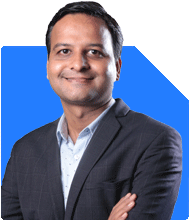My grand daughter is 4 years old. I am 70 years old. I want to invest 10 lakhs for her higher studies. Suggest me best mutual funds
Ans: You want to invest Rs. 10 lakhs for your 4-year-old granddaughter's higher education. With a long-term goal, mutual funds can help you grow the investment effectively over time. The key here is balancing growth potential with risk.
Since you’re investing for her future, a time horizon of at least 12 to 15 years is ideal for this investment to grow steadily. Let's explore how you can structure your mutual fund investment.
Growth-Focused Equity Mutual Funds
Equity mutual funds are a great option for long-term goals like education. They offer higher growth potential but come with some risk. Over 10 to 15 years, these funds usually perform well, beating inflation.
Large-Cap Equity Funds: These funds invest in well-established companies. They provide stable returns and are less volatile. You should include large-cap funds in your portfolio for stability.
Mid-Cap and Small-Cap Funds: These funds focus on mid-sized and small companies, offering higher growth potential. They are more volatile, but over a long period, they can provide good returns. Combining these with large-cap funds balances risk and growth.
Multi-Cap and Flexi-Cap Funds: These funds invest across companies of different sizes. They provide flexibility to the fund manager to invest based on market conditions. This diversification helps reduce risk while maintaining good growth prospects.
Benefits of Actively Managed Funds
You should focus on actively managed funds over index or direct funds. Actively managed funds offer the expertise of professional fund managers who actively monitor and adjust the portfolio based on market conditions. This approach generally leads to better long-term results than passive index funds, which simply track the market without active management.
Direct funds may save on expenses, but they miss out on the valuable guidance that regular plans provide through a Certified Financial Planner (CFP). Professional advice from a CFP can help optimize your investments, ensuring you stay aligned with your goals.
SIP vs Lumpsum Investment
You’re planning to invest Rs. 10 lakhs. You could invest the entire amount as a lumpsum, but a systematic investment plan (SIP) may provide some benefits. A combination of both may be ideal.
Lumpsum Investment: If you invest the Rs. 10 lakhs in one go, the money will start working for you immediately. This can be beneficial in a growing market. However, it exposes you to market volatility. If the market drops shortly after your investment, you may face temporary losses.
SIP Approach: If you spread out the investment over several months through SIPs, you reduce the impact of market fluctuations. This helps in averaging out the cost of investment. While it may take longer to invest the full Rs. 10 lakhs, it provides some protection against market volatility.
You can also adopt a hybrid approach, investing a portion as lumpsum and the rest via SIPs. A certified financial planner can guide you on the best strategy based on the current market scenario.
Importance of Regular Reviews and Rebalancing
Over time, market conditions change, and so does the performance of your funds. To keep your investment on track, regular reviews are important. If a fund underperforms, rebalancing may be needed to shift your investment to better-performing options.
A Certified Financial Planner can help monitor and rebalance your portfolio as needed. They can also help with tax-efficient withdrawals when the time comes for your granddaughter’s higher education.
Tax Implications on Mutual Funds
It’s important to consider the tax implications of your investments:
Equity Mutual Funds: For equity mutual funds, long-term capital gains (LTCG) above Rs. 1.25 lakh are taxed at 12.5%. Short-term capital gains (STCG) are taxed at 20%.
Debt Mutual Funds: If you decide to include debt funds for lower risk, the gains will be taxed based on your income tax slab for both long-term and short-term capital gains.
This means careful planning is needed when withdrawing funds for your granddaughter's education to minimize tax liabilities. A Certified Financial Planner can help plan this efficiently.
Emergency Fund and Liquidity Considerations
While your goal is to invest for your granddaughter’s education, it’s also essential to keep some liquidity for emergencies. Having a portion of your funds in liquid mutual funds or ultra-short-term debt funds ensures you can access money if needed without disturbing the core investment.
Keeping an emergency fund ensures that your investment for her education remains untouched and grows as planned.
Investing with a Certified Financial Planner
Investing directly in mutual funds without professional guidance may seem cost-effective, but it lacks the strategic insight required for long-term goals. A Certified Financial Planner can help select the right funds, monitor performance, and adjust your strategy when needed.
They can also provide ongoing support, ensuring your investment stays on track and grows towards the Rs. 10 lakh goal for your granddaughter's higher education. Regular funds, when managed through a professional, offer the advantage of continuous oversight and portfolio adjustments.
The Power of Compounding Over Time
Your investment has the potential to grow significantly due to the power of compounding. By reinvesting the gains, your money can grow faster over time. The longer the investment stays, the more it benefits from compounding.
Starting now for your granddaughter's education gives the investment plenty of time to grow. Make sure to stay invested for the full 10 to 15 years to reap maximum benefits.
Final Insights
Your Rs. 10 lakh investment can grow effectively if planned and managed well. Here’s a recap of what you should focus on:
Invest in equity mutual funds with a mix of large-cap, mid-cap, and multi-cap funds for balanced growth and risk.
Use actively managed funds over direct plans or index funds to benefit from professional management.
Decide between a lumpsum, SIP, or hybrid approach based on your risk tolerance and market conditions.
Regularly review and rebalance your portfolio with the help of a Certified Financial Planner.
Consider the tax implications and ensure you have an emergency fund for liquidity.
By following these steps, you will be able to build a strong corpus for your granddaughter’s education while minimizing risks and maximizing returns.
Best Regards,
K. Ramalingam, MBA, CFP,
Chief Financial Planner,
www.holisticinvestment.in
https://www.youtube.com/@HolisticInvestment

























